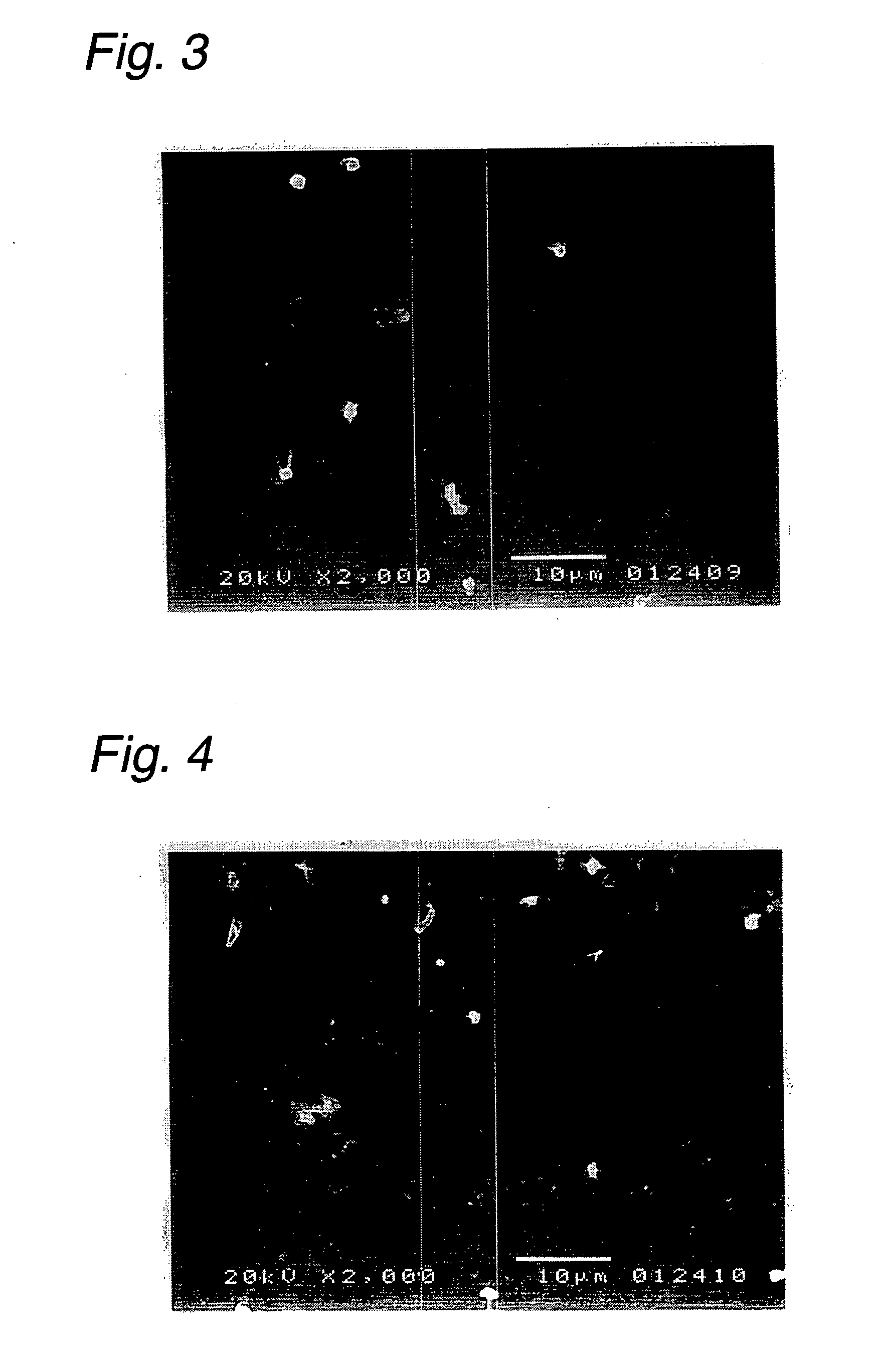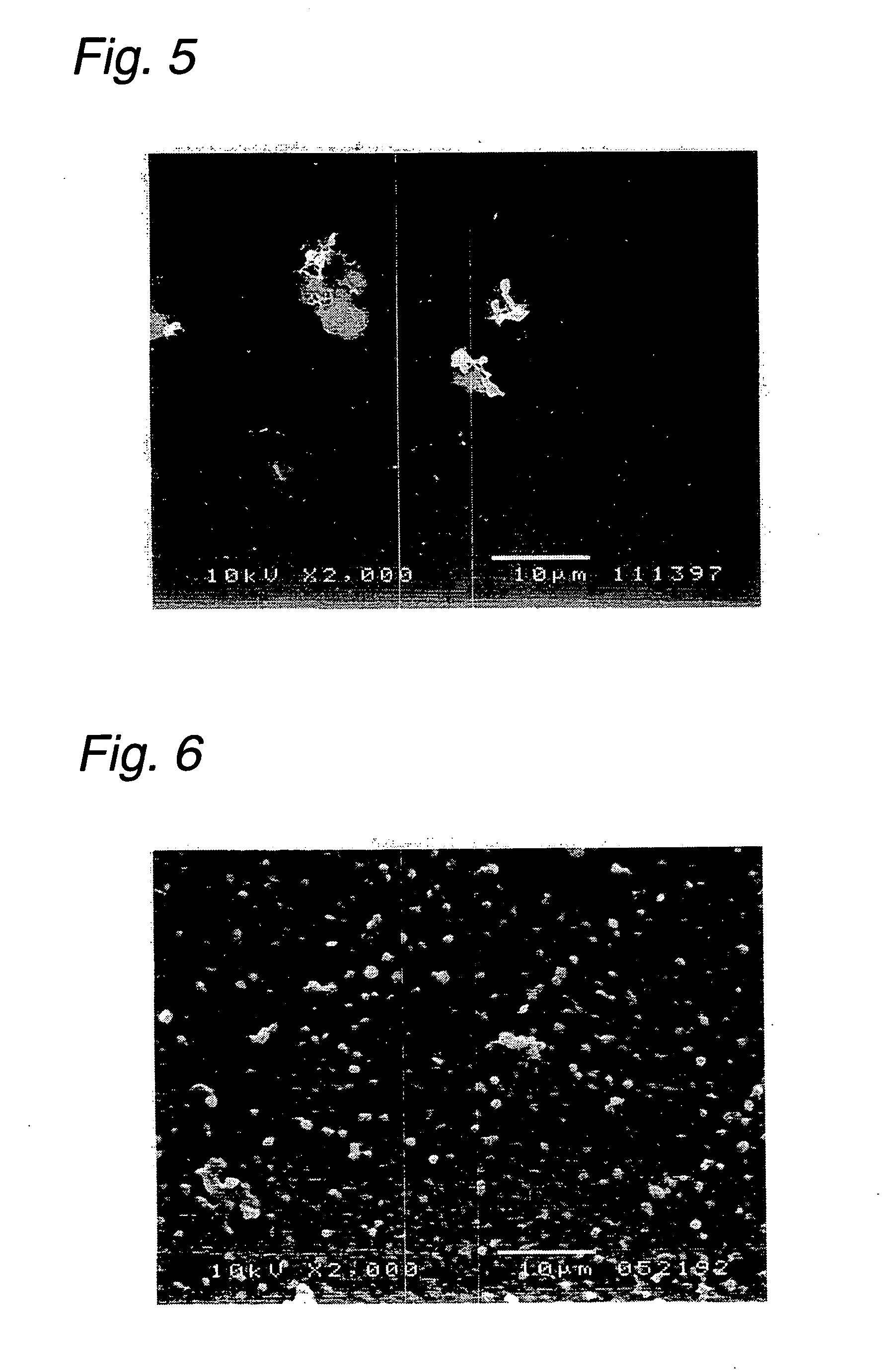Compound having phosphorylcholine group, polymer thereof and process for producing the same
- Summary
- Abstract
- Description
- Claims
- Application Information
AI Technical Summary
Benefits of technology
Problems solved by technology
Method used
Image
Examples
example 1
Synthesis 1 of a Diamine Compound of the Invention
[0092]
[0093] In an argon atmosphere, ethylene glycol (24.0 ml, 430 mmol), dry tetrahydrofuran (340 ml) and dry triethylamine (60.0 ml) were mixed in a three-necked flask to give a solution. To the solution was slowly added dropwise a solution of 3,5-dinitrobenzoyl chloride (10.0 g, 43.4 mmol) in dry tetrahydrofuran (150 ml), with the flask in an ice water bath. After the completion of the dropwise addition, the mixture was stirred for 20 hours at room temperature. Subsequently, the product was extracted with chloroform and washed with distilled water. The organic liquid phase was dehydrated with sodium sulfate and then filtered off, and the solvent was distilled away under reduced pressure. Thereafter, purification of the residue was performed by silica gel column chromatography (developing solvent: hexane / ethyl acetate=1:1 (by volume)) to obtain an alcoholic compound represented by the above formula (1) as a yellow solid (amount: 8...
example 2
Synthesis 1 of a Dicarboxylic Acid Compound of the Invention
[0105]
[0106] 5-Hydroxyisophthalic acid (16.2 g, 89.0 mmol) was dispersed in 150 ml of methanol in an eggplant-shaped flask. The dispersion was combined with 3.0 ml of concentrated sulfuric acid, and the mixture was refluxed at 75° C. for 3 hours and half. After the reaction, distilled water and a saturated aqueous solution of sodium hydrogencarbonate were added in excess. The precipitate formed was filtered off and dried under reduced pressure. The resultant solid was purified by recrystallization method using a hexane / chloroform mixed solvent to afford methyl 5-hydroxyisophthalate represented by the above formula (5) as a white solid (amount: 13.8 g, yield: 73.8%). The compound structure was identified by the 1H-NMR spectrum given below:
[0107]1H-NMR, δ(400 MHz, CDCl3, ppm): 3.87 (6H, s), 6.25 (1H, s), 7.64 (2H, d, J=1.47 Hz), 8.17 (1H, t, J=1.46 Hz).
[0108] The above-prepared compound (5) (12.0 g, 57.0 mmol), dimethylsul...
example 3
Synthesis 2 of a Dicarboxylic Acid Compound of the Invention
[0114]
[0115] The compound (6) (3.40 g, 15.8 mmol) prepared in Example 2 was dissolved in 64 ml of tetrahydrofuran. The solution was combined with 50 ml of an aqueous solution containing 3.74 g of sodium hydroxide, and the mixture was refluxed for 72 hours. Subsequently, the reaction liquid was cooled to room temperature and concentrated hydrochloric acid was added thereto to adjust the pH to approximately 1 to 2. After the tetrahydrofuran had been distilled away from the mixture under reduced pressure, excess distilled water was added and the mixture was allowed to stand. Thereafter, the precipitate formed was filtered off, and the solid obtained was purified by recrystallization method using a hexane-chloroform mixed solvent to afford an alcoholic compound represented by the above formula (9) as a white solid (amount: 2.43 g, yield: 68.1%). The compound structure was identified by the 1H-NMR spectrum given below:
[0116]1H...
PUM
| Property | Measurement | Unit |
|---|---|---|
| Molecular weight | aaaaa | aaaaa |
Abstract
Description
Claims
Application Information
 Login to View More
Login to View More - R&D
- Intellectual Property
- Life Sciences
- Materials
- Tech Scout
- Unparalleled Data Quality
- Higher Quality Content
- 60% Fewer Hallucinations
Browse by: Latest US Patents, China's latest patents, Technical Efficacy Thesaurus, Application Domain, Technology Topic, Popular Technical Reports.
© 2025 PatSnap. All rights reserved.Legal|Privacy policy|Modern Slavery Act Transparency Statement|Sitemap|About US| Contact US: help@patsnap.com



